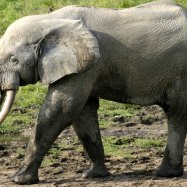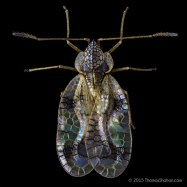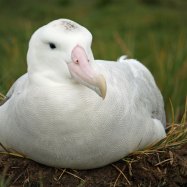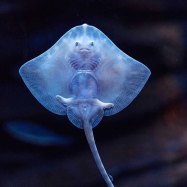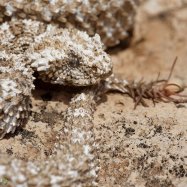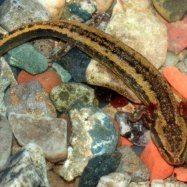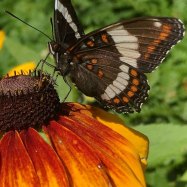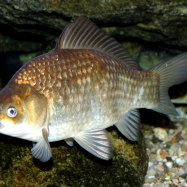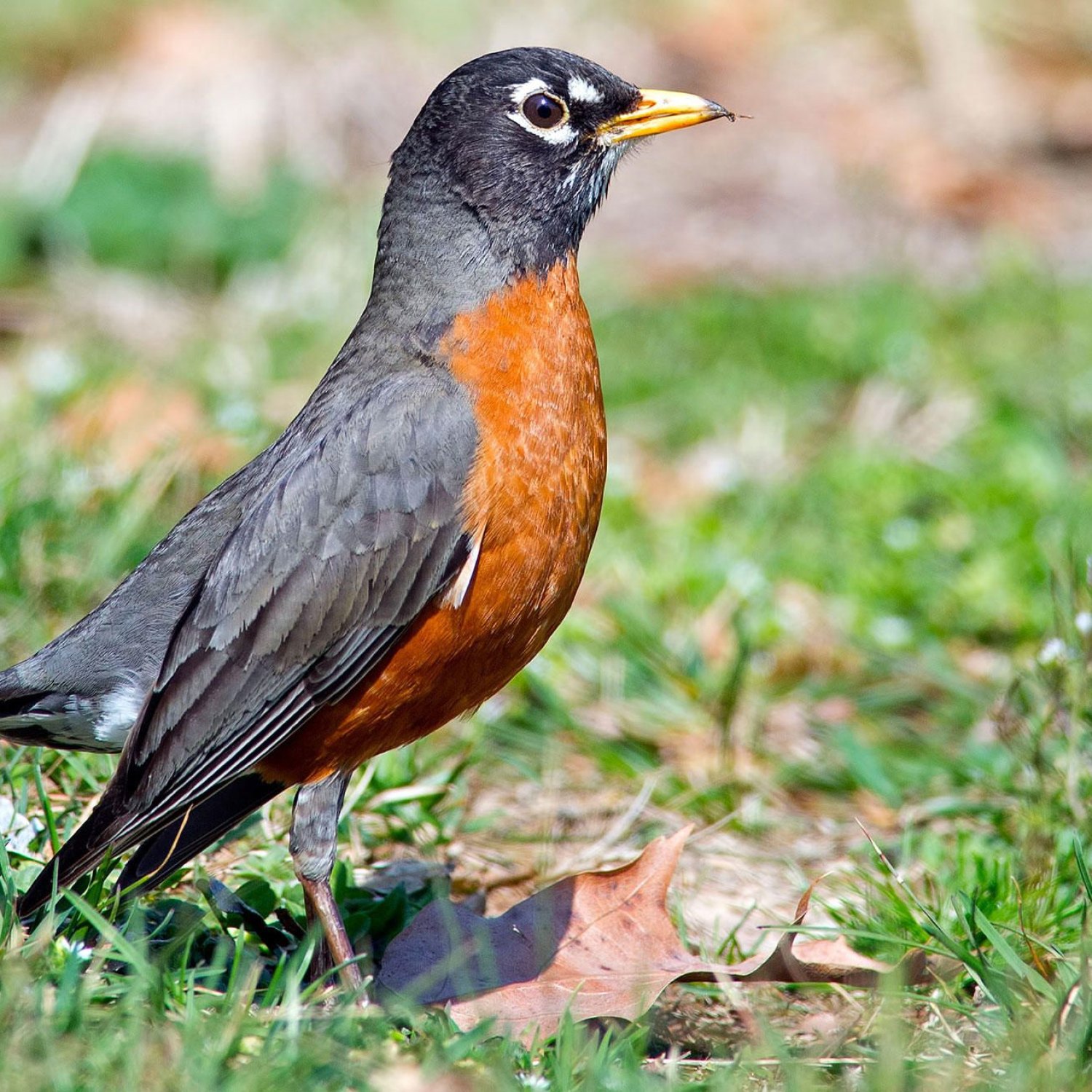
American Robin
20-28 cm (8-11 in)
The American Robin is a common sight throughout North America, known for its distinct orange-red breast and melodic song. This medium-sized bird, part of the Turdidae family, measures 20-28 cm (8-11 in) in length. Keep an eye out for this plump-feathered beauty on your next hike or picnic in the great outdoors. #AmericanRobin #NorthAmericanWildlife #BirdWatching
Animal Details Summary:
Common Name: American Robin
Kingdom: Animalia
Habitat: Woodlands, forests, parks, gardens
The American Robin: A Symbol of Spring in North America
As the long, cold winter starts to blend into the warmth and beauty of spring, there is one animal that signifies the changing of seasons like no other. The American Robin, also known by its scientific name Turdus migratorius, is a beloved bird found throughout North America. Its arrival marks the end of winter and the beginning of spring, making it an icon in the animal kingdom.Kingdom, Phylum, Class, Order, and Family
The American Robin belongs to the kingdom Animalia, which translates to "animals" in Latin American Robin. This kingdom is further divided into various phyla, with the American Robin belonging to the phylum Chordata. This phylum includes all animals with a spinal cord and backbone.Within the phylum Chordata, the American Robin falls under the class Aves, or birds. Birds are characterized by their feathered bodies, wings, and ability to fly. The American Robin also belongs to the order Passeriformes and the family Turdidae. The Passeriformes order is the largest order of birds, with over half of all bird species belonging to it. The Turdidae family is known as the thrush family and is made up of over 340 species of birds.
Habitat and Geographical Distribution
The American Robin is a versatile bird that can be found in various habitats, including woodlands, forests, parks, and gardens. It is a relatively adaptable species, and its population has grown over the years due to human development and habitat fragmentation Australian Shepherd Mix.The geographical distribution of the American Robin extends throughout North America, from northern parts of Canada to Mexico. It is most commonly found in the United States, with a significant breeding population in the central and eastern regions.
Feeding Method
The American Robin is known as an omnivorous bird, meaning it eats both plant and animal matter. Its diet includes worms, insects, berries, fruits, and seeds. During the breeding season, they consume mostly insects, while their diet shifts to mostly fruit in the winter months. This flexible feeding method allows them to survive and thrive in different habitats and environments.Country of Origin and Location
Despite its name, the American Robin's country of origin is not the United States. The species evolved in continental Europe and Asia before expanding to the Americas. The American Robin is a migratory bird and can be found in different locations across North America throughout the year. In the summer months, they breed in Canada and the northern United States, while in the winter, they migrate to the southern United States and Mexico.Animal Coloration and Body Shape
The American Robin has a distinctive coloration, making it easily recognizable. Its back, wings, and head are a dark gray to black, while its breast is a rusty-red color. This coloration helps it blend in with its surroundings, making it less visible to predators. Its body shape is another notable feature, as it is a medium-sized bird with a plump body and a long, thin beak.Length
On average, the American Robin measures between 20-28 cm (8-11 in) in length. This measurement includes its head, body, and tail. While this might not seem very big, when compared to other birds, the American Robin is a medium-sized bird. Its compact size allows it to navigate through narrow spaces and forage for food in various habitats.The Significance of the American Robin
The American Robin's arrival in North America is celebrated by many as a sign of spring and the end of winter. This belief originated from ancient civilizations, where the return of the American Robin was seen as a sign of the arrival of warmer weather and the end of harsh winters. Today, this tradition continues, with the American Robin being hailed as a symbol of hope and new beginnings.Not only is the American Robin a symbol of spring, but it also plays an essential role in the ecosystem. As an omnivorous bird, it helps control insect populations, ensuring that they do not get out of hand. They also play an essential role in seed and fruit dispersal, aiding in the spread and germination of plants.
Threats and Conservation
Despite its widespread population, the American Robin still faces various threats to its survival. The destruction of habitats and climate change are the primary threats facing this beloved bird. As human development continues to expand, the American Robin's habitat is decreasing, making it more challenging for them to find suitable breeding and foraging grounds.Climate change is also impacting the American Robin, as it affects their migration patterns and food sources. As temperatures rise, their breeding season is starting earlier, which disrupts their synchronized behavior and can lead to a decline in the population. Changes in weather patterns and availability of food sources also impact their survival.
To ensure the American Robin's continued survival, organizations and individuals are taking steps to protect and conserve these birds. Creating more protected areas, reducing pesticide use, and promoting sustainable practices are some of the ways we can help the American Robin thrive.
In Conclusion
In conclusion, the American Robin is a fascinating and beloved bird found throughout North America. Its arrival marks the end of winter and the beginning of spring, making it a symbol of hope and new beginnings. With its unique coloration, body shape, and feeding methods, the American Robin continues to captivate and enchant us. As we work to protect and conserve this species, we must remember its importance in the ecosystem and its significance in our lives. So the next time you see an American Robin, take a moment to appreciate the beauty of this remarkable bird.

American Robin
Animal Details American Robin - Scientific Name: Turdus migratorius
- Category: Animals A
- Scientific Name: Turdus migratorius
- Common Name: American Robin
- Kingdom: Animalia
- Phylum: Chordata
- Class: Aves
- Order: Passeriformes
- Family: Turdidae
- Habitat: Woodlands, forests, parks, gardens
- Feeding Method: Omnivorous
- Geographical Distribution: North America
- Country of Origin: United States
- Location: Throughout North America
- Animal Coloration: Dark gray to black, with a rusty-red breast
- Body Shape: Medium-sized bird with a plump body
- Length: 20-28 cm (8-11 in)
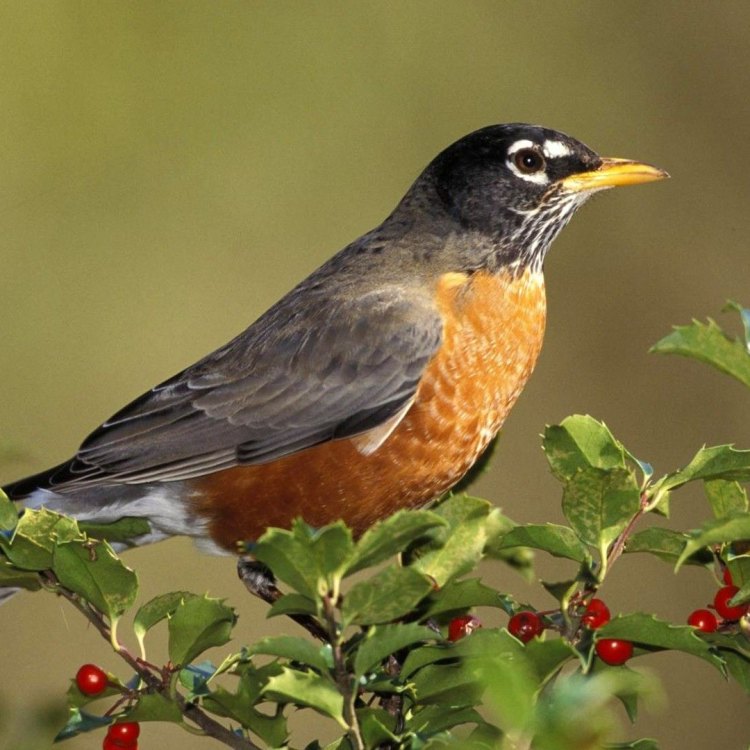
American Robin
- Adult Size: Medium-sized
- Average Lifespan: Up to 13 years
- Reproduction: Sexual
- Reproductive Behavior: Monogamous
- Sound or Call: Varied songs and calls
- Migration Pattern: Migratory
- Social Groups: Generally solitary, but can form loose flocks
- Behavior: Active during the day, forages on the ground
- Threats: Habitat destruction, climate change, pesticide use
- Conservation Status: Least Concern
- Impact on Ecosystem: Seed dispersal, insect control
- Human Use: Popular state bird in several US states
- Distinctive Features: Rusty-red breast and white eye-ring
- Interesting Facts: They are known for their cheerfully melodious songs
- Predator: Birds of prey, domestic cats
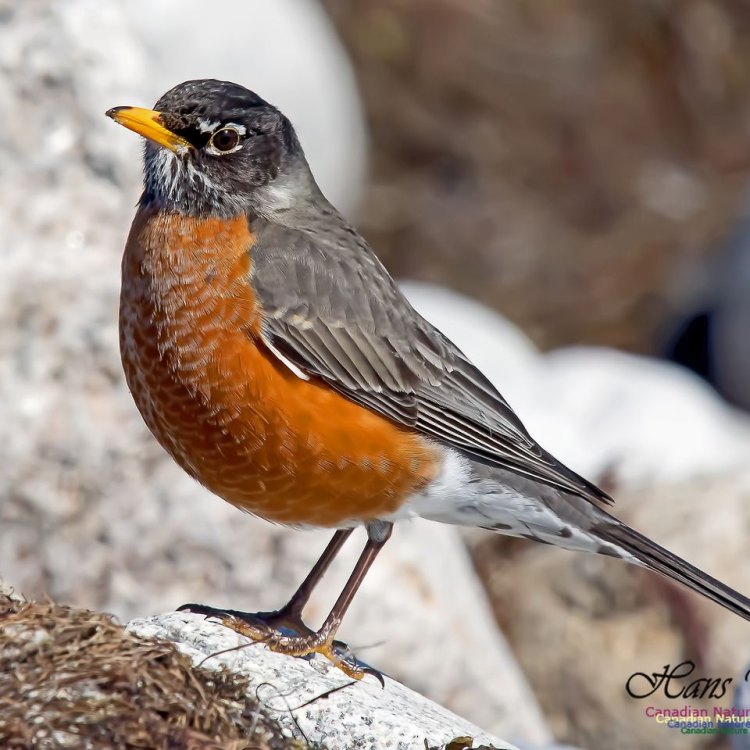
Turdus migratorius
The American Robin: A Colorful and Melodious Treasure of North America
There's a certain bird that's hard to miss in the United States and Canada, with its striking rusty-red breast and melodic songs that echo throughout the neighborhood. It's the American Robin, a medium-sized thrush that is a common sight in backyards, parks, and gardens. While they may seem like an everyday bird, there's much more to discover about these fascinating creatures.Adult American Robins are about 10 to 11 inches in length, making them slightly larger than a typical sparrow but smaller than a crow PeaceOfAnimals.Com. They weigh around 2.7 to 3.0 ounces, making them lightweight and agile fliers. Their average lifespan is up to 13 years, with some individuals even reaching 15 years in the wild.
One of the most interesting aspects of the American Robin's behavior is their monogamous reproduction. During the breeding season, which runs from March to July, male and female robins form pairs and stay together throughout the season. They engage in courtship displays, with the male puffing up his chest and drawing his head back while singing to attract a mate. Once a pair bonds, they build a nest together, usually in a tree or shrub, and take turns incubating the eggs.
Speaking of songs, the American Robin is one of the most vocal birds in North America Amberjack. Their repertoire of sounds and calls is diverse, ranging from low, guttural notes to melodic warbles. They use these songs to attract potential mates, establish territories, and communicate with other robins. You'll often hear them singing during the morning or evening hours, but they may also vocalize throughout the day.
Another interesting behavior of American Robins is their migratory pattern. While some individuals may stay in their breeding grounds year-round, most robins migrate to the southern United States, Mexico, or even South America during the winter. They embark on their journey in flocks, with some traveling up to 200 miles each day. In the early spring, they make the journey back to their breeding grounds, often arriving at the same spot they left the previous year.
In terms of social groups, American Robins are generally solitary birds. However, during migration and in winter, they may form loose flocks, often foraging together for food. During the breeding season, they defend a territory of around 1 to 2 acres, where they search for food and raise their young.
American Robins are known for their active nature, constantly foraging for food during the day. They feed on a variety of insects, worms, and fruits, with berries and earthworms being some of their favorites. They have a unique feeding behavior where they cock their head to the side and then pull a worm out of the ground with a swift tug. They are also excellent seed dispersers, helping to spread seeds from the fruits they eat, contributing to the diversity of plant species.
Like many species, the American Robin faces several threats in its natural habitat. Habitat destruction due to urbanization and deforestation is a significant issue, as it leads to the loss of trees and open grasslands that they depend on for nesting and food. Climate change also poses a threat, affecting their food availability and migratory patterns. Pesticide use, particularly the use of insecticides, can cause unintended harm to robins and other beneficial insect-eating birds.
Fortunately, the American Robin is currently listed as "Least Concern" in terms of conservation status. However, monitoring and conservation efforts are necessary to ensure their populations remain stable. These efforts include creating safe nesting sites, planting native plants for food sources, and reducing the use of harmful chemicals in our environment.
Besides their ecological impact, American Robins also have a significant role in human culture. They are the state bird in Connecticut, Michigan, and Wisconsin, and have been given the honor of being the provincial bird of Saskatchewan, Canada. They've also been featured in literature, art, and music, with their cheerful songs making them a popular subject for poets and composers.
Aside from their distinctive rusty-red breast and white eye-ring, American Robins have many interesting features that make them stand out. For one, they are excellent parent birds, taking turns incubating eggs and caring for their young. They also have keen eyesight, allowing them to spot prey from a distance. Additionally, their breeding grounds act as a stage for their beautiful courtship displays, where they display their vibrant colors and melodic songs.
In terms of predators, American Robins face threats from various birds of prey, such as hawks, falcons, and owls. They are also susceptible to domestic cats, who often prey on their nests and young chicks. However, overall, the robin population remains stable and is not considered at risk from predators.
In conclusion, the American Robin is a colorful and melodious treasure of North America. Their unique features, reproductive behaviors, and migratory patterns make them a fascinating species to observe and study. Their impact on the ecosystem goes beyond their beautiful appearance and songs, as they play a vital role in seed dispersal and insect control. As we continue to learn more about these birds, it's essential to protect their habitat and promote conservation efforts to ensure their presence in our neighborhoods for years to come. Next time you hear their cheerful songs and catch a glimpse of their vibrant red breast, take a moment to appreciate the beauty and significance of the American Robin.
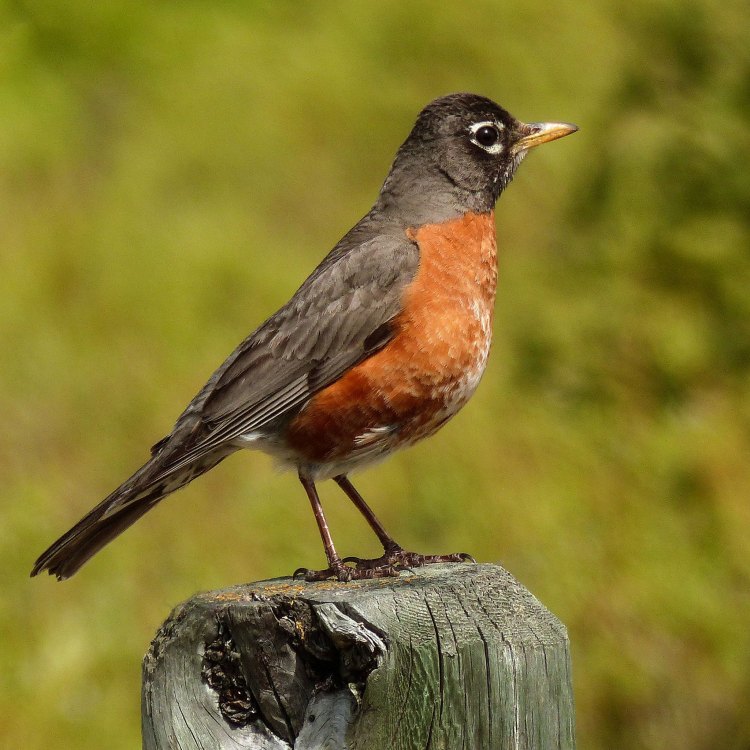
The American Robin: A Symbol of Spring in North America
Disclaimer: The content provided is for informational purposes only. We cannot guarantee the accuracy of the information on this page 100%. All information provided here may change without prior notice.

